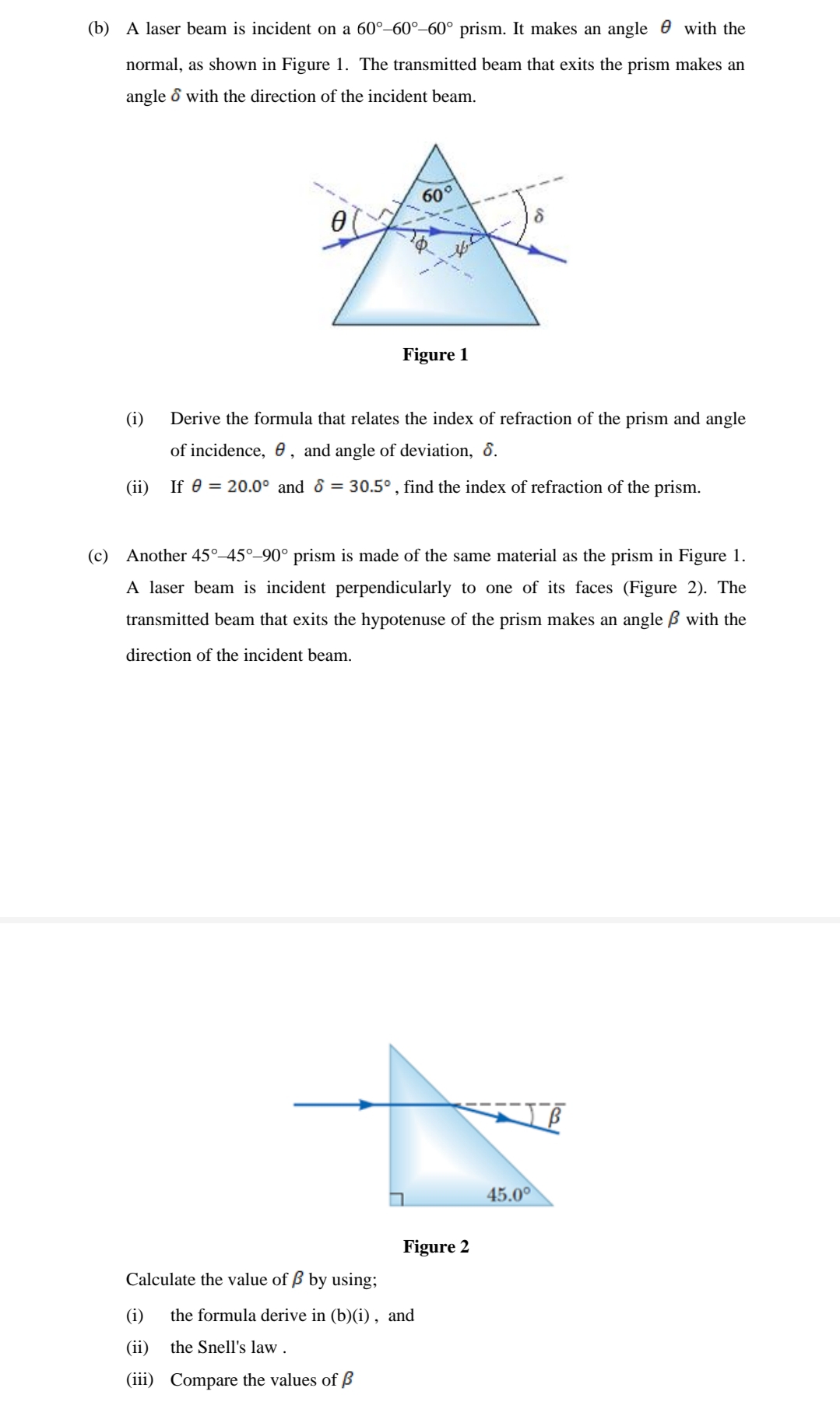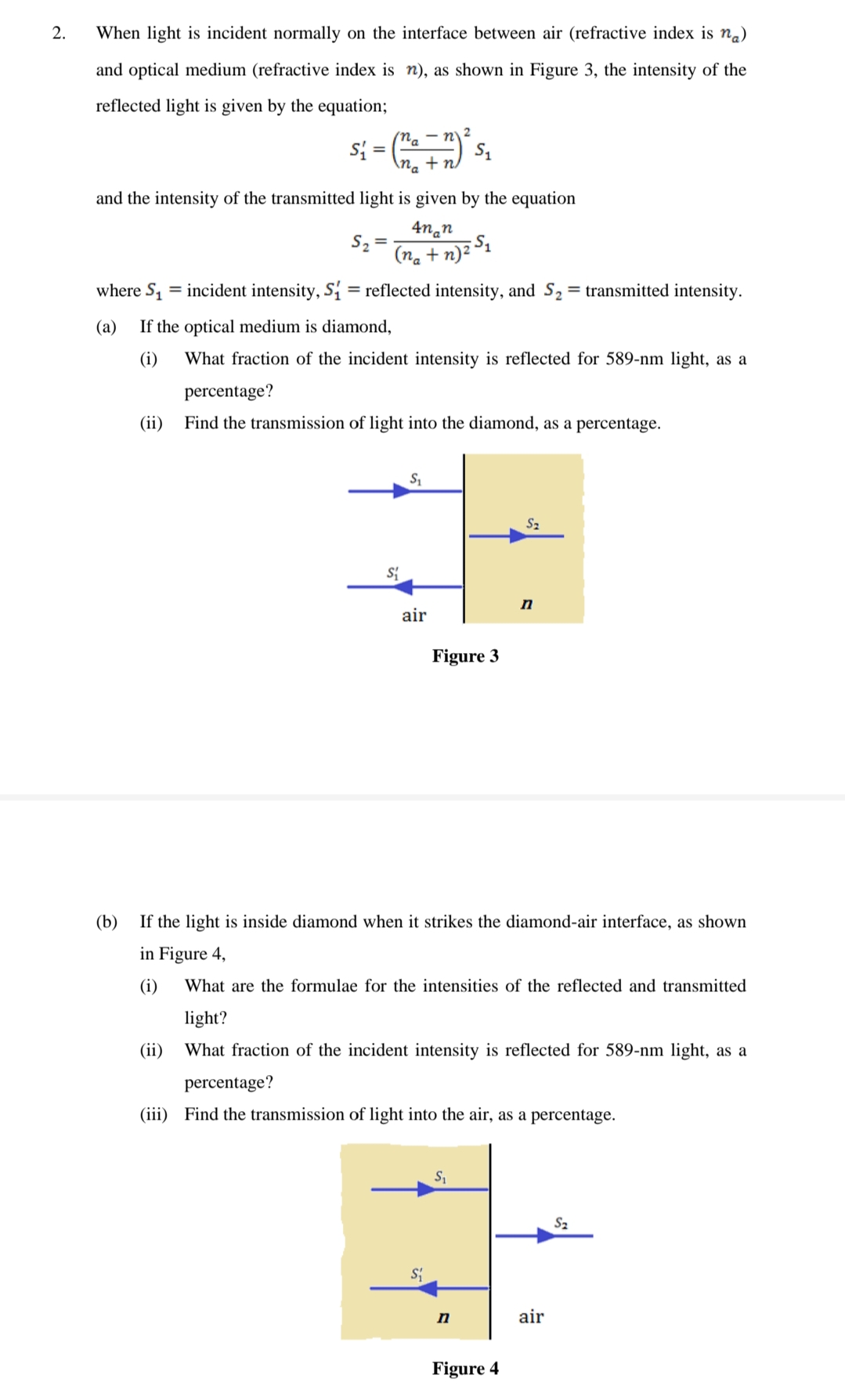A laser beam is incident on a 60°–60°–60° prism. It makes an angle e with the normal, as shown in Figure 1. The transmitted beam that exits the prism makes an angle ô with the direction of the incident beam. 60° Figure 1 (i) Derive the formula that relates the index of refraction of the prism and angle of incidence, 0, and angle of deviation, 8. (ii) If 0 = 20.0° and ô = 30.5° , find the index of refraction of the prism. %3D %3|
A laser beam is incident on a 60°–60°–60° prism. It makes an angle e with the normal, as shown in Figure 1. The transmitted beam that exits the prism makes an angle ô with the direction of the incident beam. 60° Figure 1 (i) Derive the formula that relates the index of refraction of the prism and angle of incidence, 0, and angle of deviation, 8. (ii) If 0 = 20.0° and ô = 30.5° , find the index of refraction of the prism. %3D %3|
Related questions
Question

Transcribed Image Text:(b) A laser beam is incident on a 60°–60°–60° prism. It makes an angle e with the
normal, as shown in Figure 1. The transmitted beam that exits the prism makes an
angle & with the direction of the incident beam.
60°
Figure 1
(i)
Derive the formula that relates the index of refraction of the prism and angle
of incidence, 0, and angle of deviation, 8.
(ii)
If e = 20.0° and & = 30.5° , find the index of refraction of the prism.
(c) Another 45°–45°-90° prism is made of the same material as the prism in Figure 1.
A laser beam is incident perpendicularly to one of its faces (Figure 2). The
transmitted beam that exits the hypotenuse of the prism makes an angle ß with the
direction of the incident beam.
45.0
Figure 2
Calculate the value of B by using;
(i)
the formula derive in (b)(i) , and
(ii)
the Snell's law .
(iii) Compare the values of ß

Transcribed Image Text:2.
When light is incident normally on the interface between air (refractive index is n.)
and optical medium (refractive index is n), as shown in Figure 3, the intensity of the
reflected light is given by the equation;
%3D
\na + n/
and the intensity of the transmitted light is given by the equation
4nan
(na + n)²
where S, = incident intensity, S{ = reflected intensity, and S2 = transmitted intensity.
%3D
(a)
If the optical medium is diamond,
(i)
What fraction of the incident intensity is reflected for 589-nm light, as a
percentage?
(ii)
Find the transmission of light into the diamond, as a percentage.
S2
n
air
Figure 3
(b)
If the light is inside diamond when it strikes the diamond-air interface, as shown
in Figure 4,
(i)
What are the formulae for the intensities of the reflected and transmitted
light?
(ii)
What fraction of the incident intensity is reflected for 589-nm light, as a
percentage?
(iii) Find the transmission of light into the air, as a percentage.
S1
S2
air
Figure 4
Expert Solution
This question has been solved!
Explore an expertly crafted, step-by-step solution for a thorough understanding of key concepts.
This is a popular solution!
Trending now
This is a popular solution!
Step by step
Solved in 5 steps with 5 images
